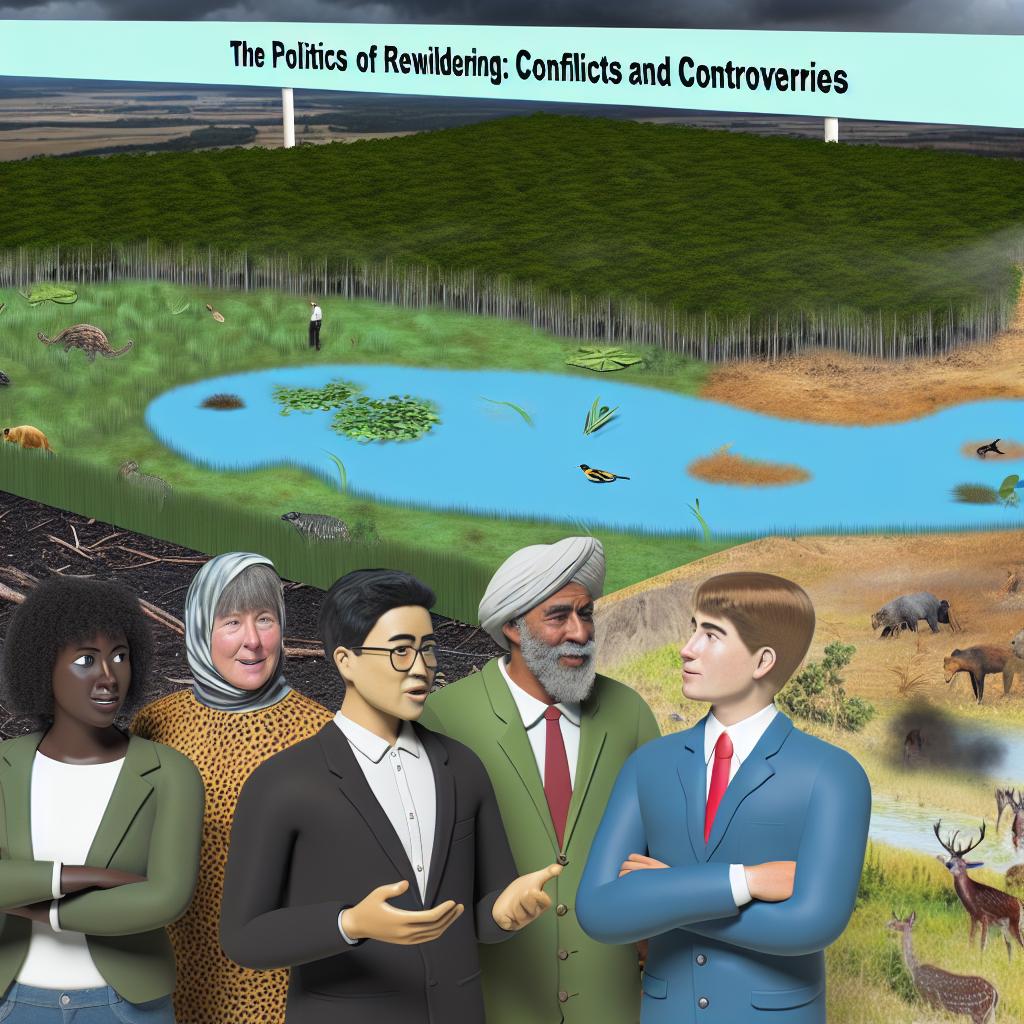
The Politics of Rewildering: Conflicts and Controversies
The Concept of Rewildering
Rewildering, often referred to interchangeably as rewilding, is an innovative environmental conservation strategy dedicated to restoring and safeguarding natural ecosystems and wilderness zones. This approach aims at reversing human-induced alterations to the natural environment, facilitating ecosystems to revert to a condition more akin to their original, pre-human disturbance states. At its core, rewildering is about allowing nature to heal and flourish with minimal human interference, primarily through the reintroduction of native flora and fauna, the restoration of degraded habitats, and a significant reduction in human impact on the land.
Environmental Benefits
The ecological benefits associated with rewildering are manifold, positioning it as a crucial strategy in contemporary conservation efforts. A fundamental advantage of this approach lies in biodiversity enhancement. By reintroducing native species and rehabilitating habitats, ecosystems become more diverse and resilient. With increased biodiversity, ecosystems are better equipped to withstand external stressors such as climate change and disease, ensuring long-term ecological stability. Moreover, robust ecosystems play a significant role in essential ecological processes. These include carbon sequestration, where carbon dioxide is pulled from the atmosphere and stored in plants and soil, and water regulation, where healthy ecosystems maintain water quality and promote a balanced hydrological cycle. These functions are of particular importance in the context of climate change, as they contribute to carbon balance and mitigate extreme weather events.
Economic Implications
The economic dimensions of rewildering present both opportunities and challenges, generating support yet also sparking tension among various stakeholders. From an economic perspective, restored landscapes that emerge from rewildering initiatives often transform into hubs for eco-tourism and recreation. These activities can generate significant revenue for local economies, creating jobs and supporting businesses that cater to the influx of visitors. Such economic benefits can, however, be offset by potential conflicts with existing industries. For example, converting land previously used for agriculture or forestry to natural reserves can impact those whose livelihoods rely on these sectors. The challenge lies in balancing the immediate economic returns from industries such as agriculture and the long-term environmental benefits that rewildering promises.
Conflicts and Controversies
Rewildering initiatives are not without their detractors and often trigger debates among environmentalists, local communities, policymakers, and other stakeholders with vested interests. Several key sources of contention are commonly observed in the implementation of rewildering projects.
Land Use
Perhaps the most evident area of conflict stems from land-use changes. Transitioning lands from intensive agricultural or forestry use to protected natural areas can disrupt local economies and threaten the livelihoods of individuals dependent on these industries. This conflict may emerge when the immediate, tangible economic benefits of land exploitation are juxtaposed with the long-term, often abstract environmental gains promised by rewildering. The challenge is thus to find a balance wherein the benefits of rewildering can be realized without disproportionately disadvantaging those reliant on these lands for their economic existence.
Community Involvement
The extent of community involvement in rewildering initiatives is another area of potential conflict. Critics frequently emphasize that local communities, whose lives and livelihoods are directly affected by such projects, are often sidelined in decision-making processes. This exclusion can lead to a lack of support and even active resistance to rewildering projects, as communities may perceive them as external initiatives imposed without adequate consultation. To prevent social injustice and foster project success, it’s crucial that local communities are actively involved in planning and execution, ensuring that their voices and concerns are addressed comprehensively.
Species Reintroduction
The reintroduction of species, particularly apex predators, is one of the significant points of controversy in rewildering discussions. While these species are critical for restoring ecological balance and improving biodiversity, their reintroduction is often met with resistance from local populations living near rewildering areas. Concerns include threats to personal safety and impacts on economic livelihoods, such as potential livestock losses due to predator attack. For instance, the reintroduction of wolves or lynxes often sparks heated debates over balancing ecosystem needs with community safety and economic viability.
Policy and Regulation
Successful implementation of rewildering initiatives often necessitates substantial shifts in policy and regulatory frameworks. These shifts involve re-evaluating land-use regulations, species protection laws, and environmental conservation strategies. Such regulatory changes can be contentious, especially in regions where environmental policies are politically divisive. The challenge faced by policymakers is to craft regulations that adhere to scientific recommendations for environmental conservation while simultaneously considering socio-economic impacts and maintaining governmental accountability. The potential for inconsistent enforcement adds another layer of complexity, as it can undermine efforts and lead to varied outcomes across different regions.
Conclusion
In conclusion, while rewildering holds immense promise in terms of ecological benefits, it is accompanied by considerable social and political challenges. Addressing these challenges effectively requires open, constructive dialogue and collaboration among all stakeholders involved, including environmentalists, local communities, industries, and policymakers. By prioritizing inclusive and informed decision-making processes, the likelihood of achieving successful and harmonious rewildering outcomes is significantly increased. Ultimately, while the path to rewildering may be fraught with obstacles, it offers a vital opportunity to reconnect with and restore our natural environment, fostering a sustainable future for all. For those interested in exploring rewildering projects further, platforms like Rewilding Europe offer valuable insights and resources, showcasing ongoing efforts and successes in this field.